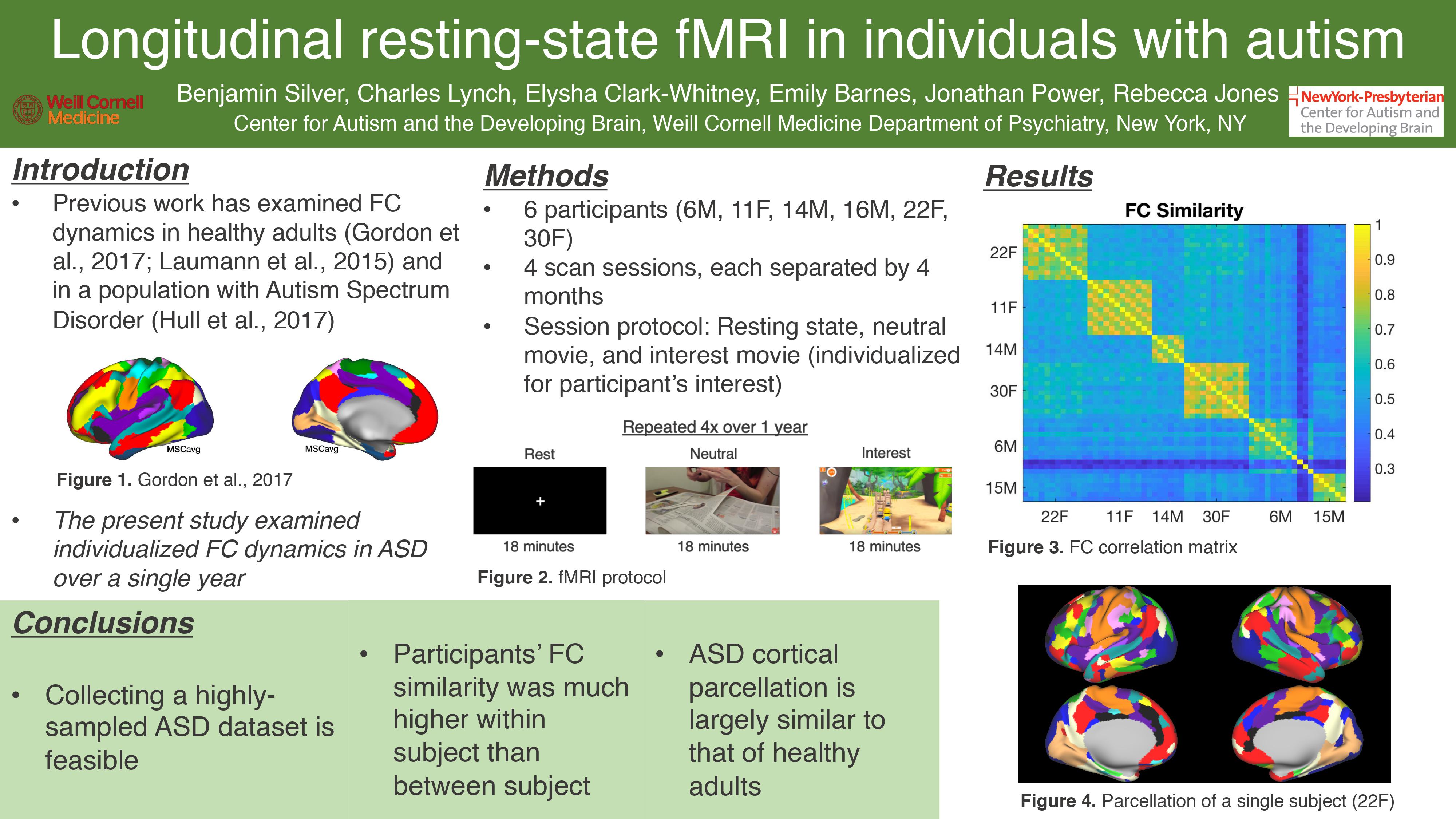Reducing impacts of motion and physiological noise during fMRI
Functional magnetic resonance imaging (fMRI) has changed psychology and neuroscience - the technology has made it possible to visualize the neural effects of both external stimuli, such as images or videos, and internal stimuli, such as thoughts or mental images. However, as all fMRI researchers know, fMRI signal is far from perfect, and is influenced by things like how much the participant moves and even how and when they breathe.
Improving the fMRI signal to noise ratio can happen during the scan, with motion reduction measurements like customized head molds or FIRMM software, or after the scan, with denoising techniques that take into account respiratory patterns. In one study, we demonstrated that customized head molds reduce motion in participants 7-28 years old. In a set of several other studies, we argued that respiratory patterns during a scan create noise, characterized different types of respiratory patterns, and demonstrated how certain breathing patterns are sex-biased, which could lead to sex-biased neural findings.
 Different types of breathing patterns in Human Connectome Project subjects. From Power et al. 2020.
Different types of breathing patterns in Human Connectome Project subjects. From Power et al. 2020.
Related work
Lynch, C.J., Voss, H., Silver, B.M., Power, J.D. (2021). On measuring head motion and effects of headmolds during fMRI. Neuroimage. DOI: https://doi.org/10.1016/j.neuroimage.2020.117494
Lynch, C.J., Silver, B.M., Dubin, M.J., Martin, A., Jones, R.M., Power, J.D. (2020). A prevalent, sex-biased respiratory pattern influences functional connectivity MRI in young adults. Nature Communications. DOI: https://doi.org/10.1038/s41467-020-18974-9
Power, J.D., Lynch, C. J., Dubin, M.J., Silver, B.M., Martin, A., Jones, R.M. (2019). Characteristics of respiratory measures in young adults scanned at rest, including systematic changes and “missed” deep breaths. Neuroimage. DOI: https://doi.org/10.1016/j.neuroimage.2019.116234
Power, J.D., Lynch, C.J., Silver, B.M., Dubin, M.J., Martin, A., Jones, R.M. (2019). Distinctions among real and apparent respiratory motions in human fMRI data. Neuroimage. DOI: https://doi.org/10.1016/j.neuroimage.2019.116041
Power, J.D., Silver, B.M., Silverman, M.R., Ajodan, E.L., Bos, D.J., Jones, R.M. (2019). Customized head molds reduce motion during resting state fMRI. Neuroimage. DOI: https://doi.org/10.1016/j.neuroimage.2019.01.016
Restricted interests in Autism Spectrum Disorder
We all have things that we’re interested in: Hobbies, favorite tv shows, topic areas we can’t learn enough about. Most of the time, we are able to inhibit our desires related to our interests - talking about them, thinking about them - when it is socially appropriate. Some children and adults with Autism Spectrum Disorder (ASD) are less able to modulate their thought patterns to match what is appropriate for the situation. The intense focus on one’s interests is sometimes called special interests or restricted interests and can lead to a reduced ability to form social relationships or carry out social interactions.
To investigate the the role of restricted interests in executive functioning and ASD psychopathology, we created tasks that utilized the restricted interests of each participant as stimuli, such as specific TV shows and video games. Some of these stimuli were in the form of photos administered in an iPad task, while others were in the form of videos administered during fMRI. Using a novel visual search task, we found no differences in low-level visual search between participants with ASD and neurotypical participants, despite known differences in visual processing between the groups in other domains. This finding suggests that inhibitory behavior differences in ASD likely originate farther down the processing stream.
 A poster I presented at FLUX in 2019 on a deeply sampled fMRI dataset of 6 participants watching videos of their interests.
A poster I presented at FLUX in 2019 on a deeply sampled fMRI dataset of 6 participants watching videos of their interests.
Related work
Silver, B.M., Conte, M.M., Victor, J.D., Jones, R.M. (2020). Visual search for circumscribed interests in autism is similar to that of neurotypical individuals. Frontiers in Psychology. DOI: https://doi.org/10.3389/fpsyg.2020.582074
Silver, B.M., Lynch, C.J., Clark-Whitney, E., Barnes, E., Power, J.D., Jones, R.M. Longitudinal resting-state fMRI using individual-specific analyses in autism. Poster presented at the FLUX Congress; New York, NY. 2019.
Silver, B.M., Barnes, E., Clark-Whitney, E., Conte, M.M., Victor, J.D., Jones, R.M. Developing a novel visual search task personalized for individual interests. Poster presented at the INSAR Conference; Montreal, Canada. 2019.
Bos, D.J., Silver, B.M., Barnes, E., Ajodan, E.L., Silverman, M.R., Clark- Whitney, E., Tarpey, T., Jones, R.M. (2019). Adolescent-specific motivation deficits in autism versus typical development. Journal of Autism and Developmental Disorders. DOI: https://doi.org/10.1007/s10803-019-04258-9
Bos, D.J., Silverman, M.R., Ajodan, E.L., Martin, C., Silver, B.M., Brouwer, G., Di Martino, A., Jones, R.M. (2019). Rigidity coincides with reduced cognitive control to affective cues in children with autism. Journal of Abnormal Psychology. Preprint DOI: 10.31234/osf.io/faz45
Silver, B.M., Bos, D.J., Ajodan, E., Silverman, M., Power, J.D., Jones, R.M. Preferred interests interfere with self-control in autism; Poster presented at The Social and Affective Neuroscience Society Conference; Brooklyn, NY. 2018.